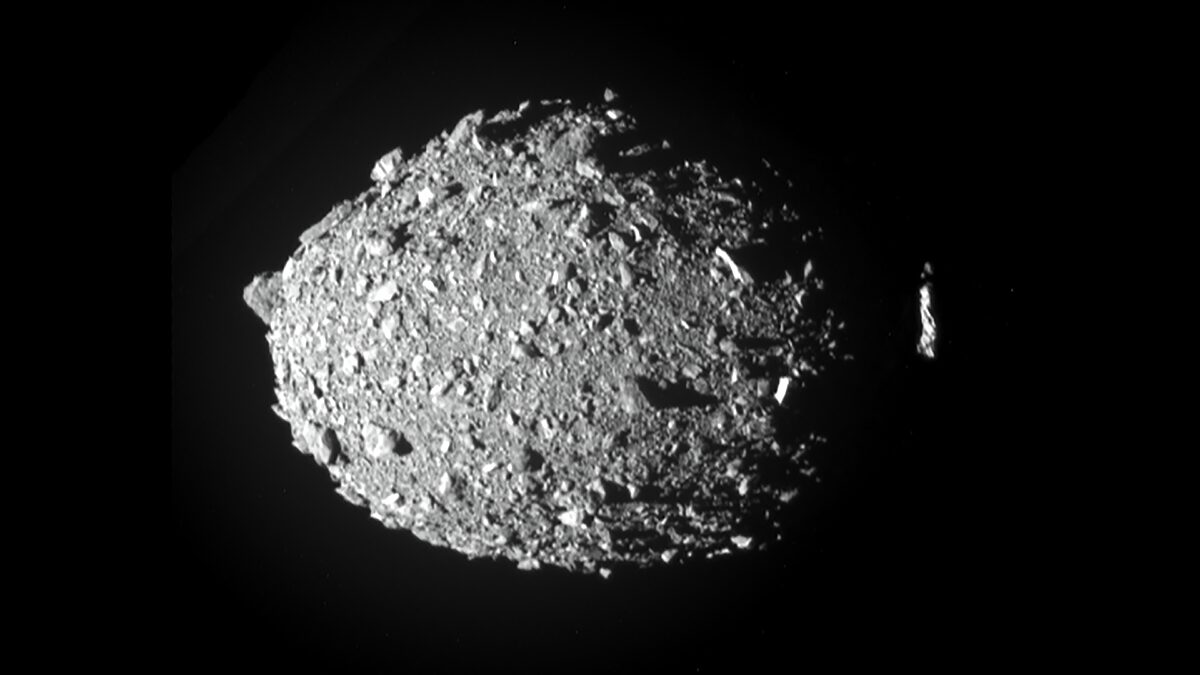Kate Howells • Oct 07, 2024
Hera launches to study the aftermath of an asteroid deflection test
The European Space Agency’s Hera spacecraft launched today, beginning its two-year journey to the site of the first-ever field test of an asteroid deflection technique. The spacecraft launched on Oct. 7, 2024, at 10:52 a.m. ET aboard a SpaceX Falcon 9 rocket from Cape Canaveral, Florida.
Hera will study the aftermath of NASA’s Double Asteroid Redirection Test (DART) mission. In September 2022, the DART spacecraft intentionally crashed into the asteroid moonlet Dimorphos, successfully altering its orbit around its parent asteroid Didymos. This test proved that, under the right conditions, the kinetic impactor technique could work to deflect an asteroid from colliding with Earth.
DART was the first step in the international Asteroid Impact and Deflection Assessment (AIDA) collaboration, and Hera is the second. The purpose of AIDA is to learn more about deflecting asteroids to prepare for a possible future scenario in which an asteroid is discovered on a collision course with Earth.

Although space and ground-based observatories have studied the Didymos-Dimorphos system since the impact, Hera’s close-up study will add valuable data to our understanding of DART’s effect.
“From the ground, Didymos and Dimorphos are just one point of light,” explained Hera project scientist Michael Küppers in an interview with Planetary Radio. “So, a change in the shape or in the rotation state of Dimorphos is not possible to derive from the ground-based observations in a unique way. This is where we needed another mission.”
That’s where Hera comes in. Its journey will take two years, including a Mars flyby in March 2025. Hera will arrive at the binary asteroid system in late 2026 and enter into orbit around Dimorphos to study how the moonlet was affected by DART’s impact.

“One goal is to measure the mass of Dimorphos, which we need to understand how efficient the impact was,” said Küppers. Another goal is to determine whether the impact formed a crater or was strong enough to deform the entire moonlet. The mission’s investigations of Dimorphos and Didymos will also help scientists better understand asteroids throughout the Solar System, including any that could someday threaten Earth. It will also be the first mission with the primary purpose of studying a binary asteroid system, potentially uncovering insights into how pairs like this form.
About six weeks after arriving at the target asteroids, Hera will deploy two CubeSats called Milani and Juventas that may try to land on Dimorphos and possibly Didymos to measure the chemical makeup of their surfaces and probe their subsurfaces.
“If they land and bounce back and go away into space, I think it would still be a success,” said Küppers. “We would learn a lot from the way they interact with the surface.”
Hera might end its mission with a similarly unpredictable experiment by attempting to land on Dimorphos, although this possibility is still under consideration by the mission team.


 Explore Worlds
Explore Worlds Find Life
Find Life Defend Earth
Defend Earth

